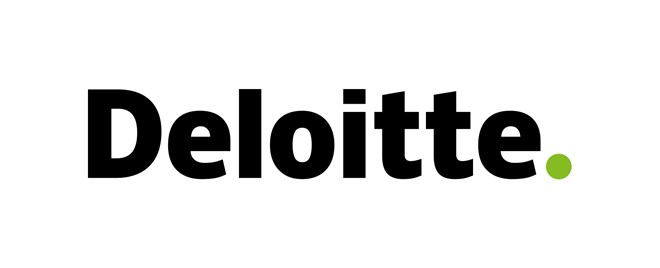Using the building blocks of deep clinical engagement and extensive activity data, ATOM – Deloitte’s theatre scheduling tool, allows trusts to reorganise their activity to optimally fill planned capacity, writes Adam Thwaites
By embarking on a journey of transformation with ATOM – Deloitte’s theatre scheduling tool, Hull University Teaching Hospitals NHS Trust achieved:
- £6m increase in income from theatre activity
- 8 per cent increase in number of patients treated
- 3 per cent reduction in LOS for elective and non-elective patients
In almost every trust, there are daily frustrations for staff working in and around operating theatres. Almost every member of these teams is faced with significant and regular pressures and is actively working to minimise blockages and wasted time. However, it is often the case that the plans, systems and processes staff are working with do not currently support this aim.
Sponsored by

In order to truly understand the challenge faced by individual providers, there is a need for the local position to be clearly understood, defined, and that local actions be undertaken for improvement to be sustainably delivered.
An operating theatre’s typical day is based around conducting a large number of diverse procedures on patients that can be just as varied, while maintaining standardised practices, such as the WHO checklist or five steps for safer surgery; the smooth handover of the patient by anaesthetics to recovery, and the need for staff breaks.
As a high-level benchmarking exercise, the national report does not account for the unpredictable and variable nature of the flow of activity through operating theatres. At a local level these elements need to be accounted for when commencing the task of improving the processes that impact upon productivity, patient and staff safety and morale.
A key foundation of implementing improvement in the theatre environment requires staff to generate a vision of what the perfect day looks like. From this point, working towards performing in this way, every day, is a simple and iterative set of actions with measurable improvements as they occur.
The Challenge
The challenge we face in driving sustainable improvements in theatre productivity is to be able to provide any trust with a staff-owned vision of what ‘good’ looks like, along with appropriate supporting systems, capacity plans and metrics to achieve this.
In order to do this, it is essential to coach clinical colleagues through these phases and deploy an appropriate set of techniques and solutions to deliver these goals.
Using the building blocks of deep clinical engagement and extensive activity data, ATOM – Deloitte’s theatre scheduling tool, allows trusts to reorganise their activity to optimally fill planned capacity, thereby minimising unnecessary down-time and costly overruns.
Why review theatre productivity?
NHSI’s 2019 national theatres productivity report identifies an opportunity to undertake over 290,000 additional procedures per year, across the 92 participating trusts. This is an opportunity of an additional 2.5 theatres of capacity per trust (Foundation Trust Network: Operating Theatres – Maximising a Valuable Resource). The growing pressure on theatres capacity has been exacerbated by constraints on capital funding and an increasingly difficult recruitment landscape, resulting in growing waiting lists and an increasing reliance on high-cost out-of-hours work.
The Approach
ATOM delivers a theatres improvement solution that enables the identification of the scale, location and type of opportunities available to trusts in optimising their theatres utilisation. Using artificial intelligence, ATOM reads surgeons’ free text notes and translates them into classified procedures. Procedures combined with complexity and comorbidities to generate highly accurate operating times that are used to configure optimal theatre schedules and timetables. The scheduling assistant then provides theatres staff with a daily recommended theatres schedule that is configured to minimise unnatural downtime, and to prevent costly late starts and early finishes.
So far, 17 acute providers have deployed the ATOM approach to deliver a step-change in their theatre productivity, reduce costs and increase throughput.
While the use of the scheduling tool is relatively simple, embedding an alternative approach to scheduling and/or timetabling requires extensive clinical engagement to support clinical colleagues to be at the forefront of measures to improve performance and embed that change.
Sustaining Change
The previous deployments of ATOM have consistently provided trusts with sustained theatre utilisation of at least 12 per cent, with further incremental improvements continuing long after the initial deployment.
To support trusts in maintaining and continuing to improve their performance, ATOM is complemented by an optional online system that allows managers to track current capacity, and to plan optimal future lists and schedules.
The ATOM approach allows trusts to plan future lists proactively.
What has the impact of utilising ATOM been?
ATOM was implemented across surgical specialities at the Hull University Teaching Hospitals NHS Trust. The theatre timetable was redesigned to increase the Trauma & Acute capacity and to better align the capacity for each specialty.
This has resulted in:
- A total benefit of over 20:1 ROI
- The number of patients treated in this period is above the previous period by 8 per cent
- Income from theatre activity has increased by 10.5 per cent - (£6m p.a.)
- Utilisation of theatre sessions (sessions used versus plan) has improved by 4 per cent
- “in list” Utilisation has increased by 8 per cent
- LOS for elective and non-elective patients has reduced by 3 per cent
“This work has been a great example to using external support to drive real, sustainable improvements in productivity and efficiency, enabling the Trust to treat significantly more patients within our limited theatre resource.
The level of engagement with clinical teams has been key to delivery, with an intelligence and evidence-based approach, together with the experience and credibility of the team involved, of paramount importance.
This goes far beyond the simplistic benchmarking or assessments of ‘opportunity’ regularly provided to the Trust, with real engagement, backed up by credible, well presented, intelligence, delivering real change to the benefit of staff and patients”
Matt Lowry – Finance Director, Surgery
In an increasingly challenged health economy, ATOM presents a powerful solution to the problem of constrained capacity amid growing demand. It is only by continuing to innovate and take advantage of new technologies that the health service will be able to meet the challenges of twenty first century healthcare.
Adam Thwaites is a senior manager at Deloitte UK

























